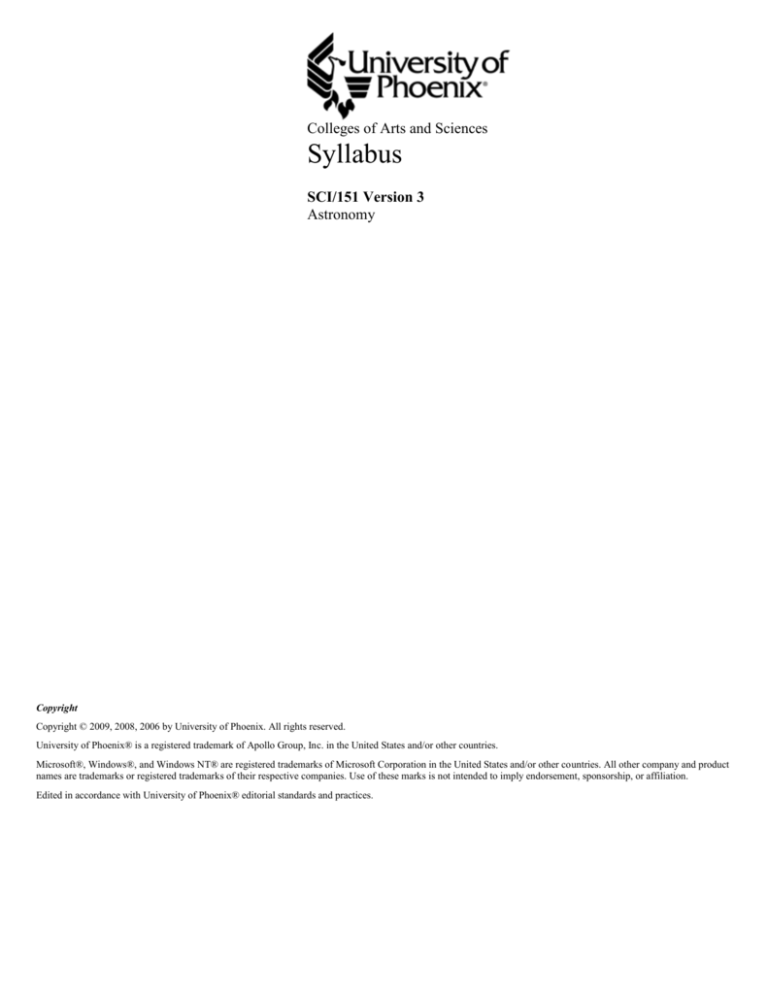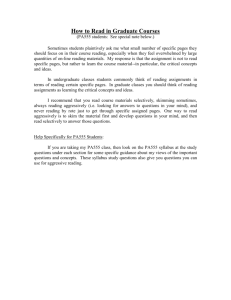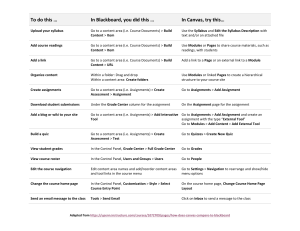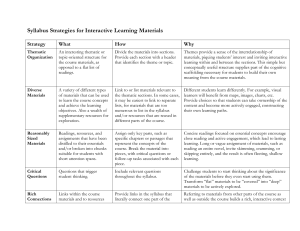
Colleges of Arts and Sciences
Syllabus
SCI/151 Version 3
Astronomy
Copyright
Copyright © 2009, 2008, 2006 by University of Phoenix. All rights reserved.
University of Phoenix® is a registered trademark of Apollo Group, Inc. in the United States and/or other countries.
Microsoft®, Windows®, and Windows NT® are registered trademarks of Microsoft Corporation in the United States and/or other countries. All other company and product
names are trademarks or registered trademarks of their respective companies. Use of these marks is not intended to imply endorsement, sponsorship, or affiliation.
Edited in accordance with University of Phoenix® editorial standards and practices.
Syllabus
SCI/151 Version 3
Course Syllabus
2
University of
Phoenix
SCI/151
Please print a copy of this syllabus for handy reference. I will only bring a few to class.
Whenever there is a question about what assignments are due, please remember this syllabus is considered
the ruling document.
Please note that the instructor’s assignments may vary from the original syllabus found on student web page.
Assignments in this document take priority. While the reading assignments and learning objectives remain the
same, some of the assignments in this syllabus have been customized for this particular section.
GENERAL COURSE INFORMATION
COURSE NUMBER: SCI/151
COURSE TITLE: Astronomy
COURSE START DATE: 3/31/2011
Thursdays 6pm to 10pm (expect to stay to 10pm!! I will bring telescopes on clear nights and we may spend a bit
of time after class, in the parking lot, looking up! Bring warm clothing.)
COURSE END DATE: 4/28/2011
LOCATION: Turnpike Campus
REQUIRED READING: The Cosmic Perspective Media Update with Mastering Astronomy - 5/e
Students
are required to read all materials available at the Course Materials site for this course on
http://ecampus.phoenix.edu. Note: The textbook is now an eResource. Backup materials (PowerPoints, the syllabus,
interesting downloads and links, will be listed on a backup Website maintained by the instructor at:
http://www.bikerjohn.com/classes/uop_ast/
Facilitator Information
Facilitator Name: John Ensworth
Email address - (University of Phoenix) jenswort@email.uophx.edu
Email address - (Personal) johnensworth@earthlink.net
Additional Electronic Resources- All correspondents will be through the OLS once our class account goes live.
Again, note that Power Points and lecture videos are available at: http://www.bikerjohn.com/classes/uop_ast
Phone Number – 720-378-2771 (cell), 303-834-8400 (home- emergency calls)
(Mountain Time)
Facilitator Availability
I am available from 9 a.m.- 8 p.m. Mountain Time on most days, but I attempt to reserve Sunday for my family. During the
week, I am online most of the time during that 9 a.m.-9 p.m. time frame. On Saturdays, I tend to be online in the early
afternoon only. If these times are not convenient for you, please let me know. I will be happy to accommodate your schedule,
if possible. I provide you with these times to make it easier to communicate with me, and not to limit our contact. I want you
to know that, should you need to contact me outside these time frames, you should not hesitate to do so.
For emergencies, when you are not able to gain access to messages on the Online Learning System (OLS), please send a
message to my personal email address. In the event a third party needs to contact me, please direct them to my contact
information listed under "facilitator information." No third party should use your login credentials to gain access to the
classroom.
Syllabus
SCI/151 Version 3
Welcome!
We’re going to explore the biggest of the big. You’ll be taken to the edge of the universe and deep into the
smallest particle of the smallest atoms. Be ready to ask questions at any moment!
Instructor Bio
John Ensworth
I am currently the Senior Science Education Specialist at the Institute for Global Environmental Strategies
which is a non-profit organization formed (among other things) to conduct independent reviews on all Earth and
space science education products produced by or for NASA. (www.strategies.org) My position is the one
responsible for directly conducting these reviews and yearly workshops at NASA centers and at the large
education conferences (i.e. NSTA, NCTM) that introduce the products that pass on the criteria of scientific
accuracy and classroom usability.
In the 90’s I was a master’s student and a PhD candidate in meteorology at the University of Oklahoma. I have
earned undergraduate degrees in physics, astronomy, geography and meteorology with minors in math and
computer science.
I became interested in astronomy in the 2nd grade and began to teach astronomy to cub scouts and boy
scouts by the 5th grade. I began to work for the Arizona State University planetarium when Halley’s Comet paid
the inner solar system a visit in 1985-1986 and taught the astronomy labs, became head TA and eventually taught
an astronomy class through the rest of the 80’s (as an undergraduate). I have worked an internship at Steward
Observatory, at the University of Arizona, Tucson, site testing for the placement of the Mt. Graham observatory
complex. I’ve also observed at the 4-meter telescope at Kitt Peak, a 36” telescope at Kitt Peak, and at the MultiMirror Telescope at Mt. Whipple.
More recently, I’ve successfully run 50+ astronomy nights for Norman Oklahoma residents and OU students
and students and the public in Virginia and Maryland, and via the Little Thompson Observatory in northern
Colorado. I have also worked at the Science Museum Oklahoma Planetarium for almost 10 years. I’ve taught
astronomy for the college degree completion program at Mid-America Christian University (formerly MidAmerica Bible College) for the last 9 years and was a member of the Oklahoma City Astronomy Club. I have also
served an internship at NASA Goddard Space Flight Center. There are other relevant bits of experience I could put
here, but I’ll save them for class when they come to mind.
3
Syllabus
SCI/151 Version 3
Course Description
This course is designed to introduce students to the science of astronomy, utilizing current concepts of the Earth, the solar system, and the
universe. In addition, historical developments in astronomy from ancient mythology to modern science will be covered.
Course Topics & Objectives
Week One: Introduction to the Science of Astronomy
Describe the universe from Earth’s perspective.
Describe the development of the science of astronomy.
Explain the physical laws that govern the universe.
Week Two: The Solar System
Describe the celestial bodies in our solar system.
Explain how solar systems form.
Week Three: Stars
Explain how astronomers interpret the interactions between light and matter.
Explain the nature of the Sun.
Explain the properties of stars.
Summarize the lifecycles of stars.
Week Four: The Large Scale Universe
Describe the structure of the Milky Way galaxy.
Describe the foundation of modern cosmology.
Explain the Big Bang model.
Week Five: Life in the Universe
.
Explain the emergence and evolution of life on Earth.
Assess the possibilities of extraterrestrial life in the universe.
4
Syllabus
SCI/151 Version 3
Course Materials
Bennett, J., Donahue, M., Schneider, N., & Voit, M. (2009). The cosmic perspective (Media Update) (5th ed.). San Francisco:
Pearson/Addison Wesley.
All electronic materials are available on your student Web site.
Recommended Weekly Point Values
Week One
Individual Assignment: History of Astronomy Outline
Week Two
Learning Team Assignment: Solar System Presentation
Week Three
Individual Assignment: Science of Stars Paper
Week Four
Individual Assignment: From the Large Scale Universe to The Milky Way Paper
Week Five
Individual Assignment: *Final Examination
Learning Team Assignment: Astronomy Research and the Search for
Extraterrestrial Life Paper
All Weeks
Participation & Discussion Questions
Assignment Totals
Individual
Learning Team
Point Total
10
10
20
10
20
20
10
70
30
100
*Note. The Final Examination will be written by the instructor.
Course Policies are now included under Materials for this course and are not
located in this syllabus. Please read that over before class begins and be familiar
with them. Thanks!
Note the new policy: All papers must have a Certificate of Originality submitted with them in the grade
book/assignments submission tool. Both your homework and the certificate must be submitted there, and
not in your OLS private box (where you can write notes to the instructor). This is covered in the Policies,
but it is new and I wanted to highlight it here.
Necessary course changes will also be reflected at the class back-up page:
http://www.bikerjohn.com/classes/uop_ast/
Participation points will come from in-class discussions and an hourly mini-sign in sheet (separate from the
main attendance sheet submitted to the university).
5
Syllabus
SCI/151 Version 3
Grading Policies
All written work will be graded according to APA guidelines. Assessments of written assignments will be based on
style, content and format, including such items as clarity of communication, sentence and paragraph construction,
punctuation, spelling, and grammar. Written assignments must be submitted on Online Learning System Forums
(OLS), unless OLS forums are unavailable at the time the assignment is due. If this is the case, the assignment
should be emailed and then posted as soon as technically possible. Assignments should be neatly typed and follow
the guidelines of the individual assignment in terms of length and content. Grades will be assigned according to the
following criteria:
A = Excellent performance. Work is exemplary and worthy of emulation by others. Student is in full attendance
and constructively contributes to the learning environment.
B = Above average performance. All assignments are complete and exhibit a complete understanding and an
ability to apply concepts.
C = Average performance. Student accomplishes only the minimum requirements. Oral and written
communication is at an acceptable level for the class.
D = Demonstrates understanding at a minimum level. Work is minimally passing.
F = Work is not passing, characterized by incompleteness, lateness, unsatisfactory demonstration of understanding
and application.
Grading Formula
Points Grade
95+
A
90-94
A-
87-89
B+
84-86
B
80-83
B-
77-79
C+
74-76
C
70-73
C-
67-69
D+
64-66
D
60-63
D-
<59
F
Partial points will be rounded to the nearest full point; for example, 83.4=83 leads to a grade of B-;
and 83.5=84 leads to a grade of B.
6
Syllabus
SCI/151 Version 3
Papers will be graded using the included rubric:
All Papers’ Rubric
Science Content
50%
Writing Flow/Readability/Appearance (see
APA guidelines or similar)
20%
Correct Length (not relying heavily on large
chunks of quoted material)
10%
Spelling/Grammar –NOTE: I will use some
aspects of the WritePoint to highlight
grammatical errors. Please pass your paper
through it first and edit accordingly!
10%
Citations/Bibliography (+correct format)
10%
Final Presentation Rubric
Max pts
Content
20
Organization of ideas
20
Presentation Delivery (ums, ah’s, ‘lost’
pauses, appearance, images and text size
in the PPT document, hard word
pronunciations)
Length (15-20min)
20
Questions fielded
20
Total
100
20
Preparation
Students are expected to do the required weekly learning in an independent manner. All assignments, including
readings, are to be completed before submissions are due.
Learning Teams
University of Phoenix students are expected to work effectively in diverse groups and teams to achieve tasks. They
must collaborate and function well in team settings as both leaders and followers. They should respect human
diversity and behave in a tolerant manner toward colleagues and peers.
Several of the assignments in this class will be completed in Learning Teams of three to five students. If you
experience difficulties working with your team, you are expected to resolve them within the team if possible.
7
Syllabus
SCI/151 Version 3
However, please feel free to contact me for guidance if you have concerns in this area.
In order to create structure for your Learning Team, you will complete a Learning Team Charter.
Participation in the learning teams will be evaluated based on evaluations to be filled out and turned in throughout
the class. You need to be honest with your teammates throughout the course and in completing the evaluations.
One of the tasks you may be responsible for in your career is evaluating your subordinates, as such this is a good
place to practice constructive criticism and praise.
After each Learning Team project, you will be asked to complete a Peer Evaluation to assess the contributions of
each member of your Learning Team (including yourself). I will take these Peer Evaluations into account when
assessing individual contributions to the Learning Team projects
Because Learning Team projects are outcome-based, all members of your Learning Team will generally earn the
same grade for Learning Team projects. However, I reserve the right to report different grades for different
Learning Team members if I see a substantial imbalance in individual contribution.
Late Assignments
Assignments are due by 5:59 p.m. on their due date and must be posted on the Online Learning System Forums. I
will deduct points for assignments turned in late, at the rate of 10% per day for 4 days. Papers will not be accepted
for a grade after 4 days. Papers will not be accepted after the last day of class. Similarly, I reserve the right to
refuse to accept any late assignments, if we have not negotiated and mutually agreed upon an alternative
submission date in advance of the due date.
8
Syllabus
SCI/151 Version 3
Week One
Introduction to the Science of Astronomy
Describe the universe from Earth’s perspective.
Describe the development of the science of astronomy.
Explain the physical laws that govern the universe.
Course Assignments
1.
Readings
Read Ch. 1–4 of the text.
Review this week’s Electronic Reserve Readings.
2.
Individual Assignment: History of Astronomy Outline
Complete the History of Astronomy Outline found in Week One on the student Web site.
3.
Learning Team Instructions
Resource: Learning Team Toolkit
Complete the Learning Team Charter.
4.
Discussion Questions
When looking at the night sky, you can see the light of different stars. If one star looks brighter than another, is it necessarily
brighter? Explain.
Astronomical discoveries are imperative to science. How are they significant to our personal lives? Explain.
Astrology is the study that believes and attempts to interpret the powers of heavenly bodies on human affairs. Why do you
think astrology is so popular around the world, although it has failed all scientific tests of validity?
Einstein discovered that energy and mass are equivalent. What is one technological development that has emerged from this
knowledge and is the human race better or worse off with it?
Why do you think astronomy was important to people in ancient times? How do those beliefs affect us today?
9
Syllabus
SCI/151 Version 3
Week Two
The Solar System
Describe the celestial bodies in our solar system.
Explain how solar systems form.
Course Assignments
1.
Readings
Read Ch. 8–10 & 12–13 of the text.
Review this week’s Electronic Reserve Readings.
2.
Learning Team Instructions
Review the objectives from Week Two and discuss additional insights and questions that may have arisen.
3.
Learning Team Assignment: Solar System Presentation
Prepare a presentation. Include the following (To be presented at the start of Week 3):
o
o
o
o
o
Utilize at least two outside resources.
Submit an 8- to 10-slide Microsoft® PowerPoint® presentation.
o
o
4.
Explain the formation of the solar system.
A cross-section of Earth with descriptions of its’ geology and atmosphere
Images and descriptions of the other terrestrial planets’ geology and atmosphere
Describe other kinds of objects (asteroids, comets, etc.) found in the Solar System.
Describe the universe from Earth’s perspective.
For Local Campus students, these are oral presentations accompanied by Microsoft ® PowerPoint® presentations.
Presentations will be made at the very start of Week 3.
Discussion Questions
Describe one observation that has led to our modern theory of solar system formation.
What celestial body you believe Pluto to be? Explain your answer.
How will geological processes affect the evidence of our civilization for future archaeologies or alien visitors in the future?
How should the landscape around where you live change over the next billion years.
If the asteroid impact 65 million years ago had not occurred, how do you think our planet would be different?
What do you believe other solar systems to be like in our universe?
10
Syllabus
SCI/151 Version 3
Week Three
Stars
Explain how astronomers interpret the interactions between light and matter.
Explain the nature of the Sun.
Explain the properties of stars.
Summarize the lifecycles of stars.
Course Assignments
1.
Readings
Read Ch. 5 & 14–18 of the text.
Review this week’s Electronic Reserve Readings.
2.
Individual Assignment: Science of Stars Paper
Prepare a 1,050- to 1,400-word paper in which you discuss the science of sunlight and stars. Include the following
elements:
o
o
o
o
Explain how astronomers determine composition, temperature, speed, and rotation rate of distant objects.
Explain the properties of stars in the H-R diagram located in Ch. 15, “What is a Hertzsprung-Russell diagram?” of The
Cosmic Perspective.
Summarize the complete lifecycle of the Sun.
Determine where the Sun is in its lifecycle.
Utilize at least two outside sources.
Format your paper according to APA standards.
3.
Discussion Questions
How has solar research been important in our lives?
How would a better understanding of the Sun help us understand the threat created by greenhouse gas emissions?
Could life exist in a molecular cloud? Explain.
Do you think it is likely that the human race will continue to exist until the Sun begins to expand into a red giant? Explain
why or why not.
Provide an example of popular culture’s use of the term black hole. Why do you think a mysterious idea as that of a black
hole has captured the public imagination?
11
Syllabus
SCI/151 Version 3
Week Four
The Large Scale Universe
Describe the structure of the Milky Way galaxy.
Describe the foundation of modern cosmology.
Explain the Big Bang model.
Course Assignments
1.
Readings
Read Ch. 19–20 & 23 of the text.
Review this week’s Electronic Reserve Readings.
2.
Nongraded Activities and Preparation
Begin reviewing material for the final exam in Week Five.
3.
Individual Assignment: From the Large Scale Universe to The Milky Way Paper
Complete the “I have a theory” tutorial found in Week Four on the student Web site. (This tutorial will help in the understanding
of scientific theories.)
Write a 700- to 1,050-word paper after completing the tutorial. Include the following:
o
o
o
Cosmology is the study of the universe as a whole. Describe modern cosmology.
The Big Bang Theory is a part of cosmology. Explain the Big Bang Theory and provide an example of one experiment
scientists performed that supported it.
The Milky Way is just one galaxy that resulted from the Big Bang. Describe the structure of the Milky Way.
Utilize at least two outside sources.
Format your paper according to APA standards.
4.
Discussion Questions
Does the fact that the entire galaxy was involved in bringing forth life on Earth change your perspective of Earth or life in
any way? Explain.
Why do you think that earlier scientists believed the universe had no beginning?
How did the Big Bang go from being an idea to a theory? Explain.
How are the cycles of matter on Earth and in the galaxy similar?
What evidence have astronomers found that support the theory that the universe will continue to expand forever?
12
Syllabus
SCI/151 Version 3
Week Five
Life in the Universe
Explain the emergence and evolution of life on Earth.
Assess the possibilities of extraterrestrial life in the universe.
Course Assignments
1.
Readings
Read Ch. 24 of the text.
Review this week’s Electronic Reserve Readings.
2.
Individual Assignment: Final Examination
Prepare to take a Final Examination.
3.
Learning Team Assignment: Astronomy Research and the Search of Extraterrestrial Life Paper (NOTE: You may choose a
different topic from the list below, you don’t HAVE to cover the search for extraterrestrial life. BUT you must generate a list of
points to handle similar to those listed in Prepare below and highlight these self-created components of your topic in your paper.
(Basically create – for yourself- a very simple – ‘main point’ outline. The outline does not need to be turned in.)
Prepare a 1,400- to 1,750-word paper in which you discuss life on Earth and the possibilities of extraterrestrial life in our
solar system. Include the following elements:
o
o
o
o
o
o
Describe the properties of life on Earth.
Explain the theories for the genesis of life.
Explain the theory of natural selection.
Briefly describe the evolution of life over the last 3 billion years.
Assess the possibilities of extraterrestrial life in the universe.
Discuss humanity’s search for extraterrestrial intelligence.
Utilize at least three outside sources.
Format your paper according to APA standards.
4.
Discussion Questions
Do you believe that Mars might have harbored life in the past? Explain.
In your opinion, is life on Earth unique?
Do you believe that other stars have planets with atmospheres that are similar to Earth’s? Explain.
What do you believe is intelligence?
Do you think humans will ever participate in interstellar flight? Explain.
13
Syllabus
SCI/151 Version 3
Final Paper Topic Suggestions:
Time Travel
Is Astrology Real?
Does the full moon make people loony? Are there more babies or crimes (911 calls) on full moon nights?
History of the telescope
What do we know about other solar systems?
What will it take to get a human colony on the Moon? or Mars?
Do people want to visit space (i.e. space hotels in orbit or on the Moon, Mars)?
Life on Jupiter's Moon Europa? Saturn's Moon Enceladus?
The astronomy (good or bad) behind the sci-fi move/TV show "fill in the blank"
The planet of your choice
Is Pluto a planet?
New Planets in the Solar System
New Planets around other stars (see the Kepler mission).
Mega-solar storms - what has happened, what could happen?
Planetariums in history, in the present, and the future?
The Beginning of the Universe - Explorations of the Cosmic Background Radiation - The End of the Universe?
What is the state of the Unification of the Forces? Or what are Theories of Everything?
What is Dark Energy? Dark Matter?
How may the Universe End?
What are the job prospects in Astronomy?
What is the economics of astronomy...who pays and how much and for what?
What is the history of ...the telescope?...space exploration?...space borne observation platforms?
What alternatives to the Big Bang exist?
What are Black Holes? What would it be like falling into one?
...or whatever else you like...just pass it by me (the instructor)!
14







